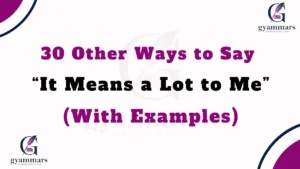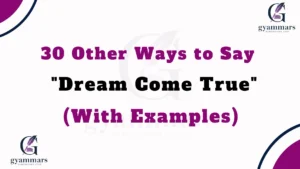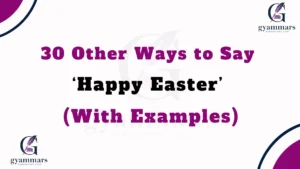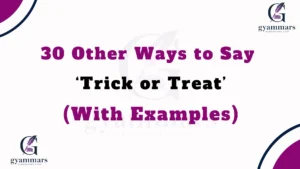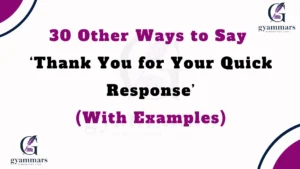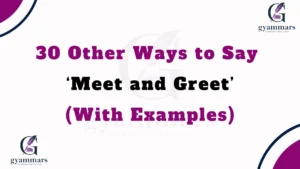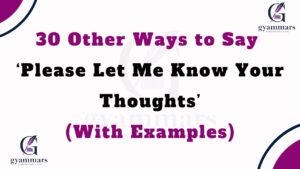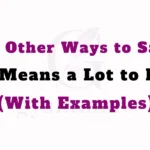When it comes to communicating ideas effectively, the concepts of compare and contrast are foundational tools. They’re often used in everyday conversations, essays, presentations, business strategies, and even decision-making processes.
But do we really understand the distinction between them, and how do we apply them correctly?
Whether you’re comparing the features of two gadgets, contrasting different approaches in business, or weighing the pros and cons of an idea, mastering these two techniques can help sharpen your clarity and guide your audience or audience’s decisions.
Let’s break down Compare and Contrast so you can make these essential concepts work for you in any context.
Understanding “Compare” – The Art of Finding Similarities
What Does “Compare” Mean?
At its core, comparing involves identifying similarities between two or more subjects. It’s about looking at their shared qualities or features and drawing connections. You’re not focused on what sets them apart; instead, you’re zooming in on what they have in common.
For example, if you’re comparing two smartphones, you might look at features like battery life, screen size, processor speed, and camera quality. These are areas where both phones may have similar or slightly different features that allow for an easier side-by-side comparison.
Comparison doesn’t just involve objective measurements; it often includes subjective qualities like user experience or aesthetic appeal that can also be considered shared characteristics. Let’s say you’re comparing two cities to determine which is better for a vacation. Both might share similarities in things like weather, cultural vibe, or food scene.
Key Takeaway: When you compare, you focus on identifying common ground between things to highlight shared traits.
When to Use “Compare”
Comparison is particularly useful when you want to showcase shared characteristics across items, helping people see what is common between things. For instance:
- Product reviews: When reviewing two competing products, comparing features helps customers understand which one offers similar benefits.
- Job applicants: If you’re comparing candidates, it’s helpful to compare their qualifications, experience, and skills.
- Service offerings: Compare different services or plans to highlight what’s alike, such as benefits or customer support options.
In all these situations, comparing helps to frame similarities that make the decision-making process easier for your audience.
Understanding “Contrast” – Emphasizing the Differences
What Does “Contrast” Mean?
Unlike comparison, which focuses on commonalities, contrast zooms in on differences between two or more things. When you contrast, you’re not just noting the characteristics; you’re diving deep into how these things diverge from each other.
For example, contrasting two cities might highlight differences in cost of living, cultural diversity, available job opportunities, or even climate. These differences make one city potentially more appealing than the other depending on the needs of the person considering a move.
Psychological Perspective on Contrast
Contrasting elements help individuals make informed decisions by focusing on what sets things apart. This technique is particularly useful when you need to understand trade-offs. For instance, in marketing, companies may contrast their product to a competitor’s product to highlight unique selling points (USPs).
Example: A fast-food chain might contrast their healthier options with the greasier alternatives offered by competitors to appeal to health-conscious consumers.
Key Takeaway: When you contrast, you look for what separates subjects, emphasizing key distinctions that can be decision-defining.
When to Use “Contrast”
Contrast is essential when you need to differentiate two items or ideas clearly. You’ll use contrast when the goal is to:
- Differentiate between two business strategies: When comparing different approaches to business, contrasting the benefits and risks of each strategy helps make the decision clearer.
- Weigh alternatives: Deciding between two schools, services, or products? Contrast the unique features, pricing, or benefits of each to assess which is most suited to your needs.
- Evaluate trade-offs: For instance, when buying a car, contrasting the fuel efficiency, maintenance costs, and safety features of different models might lead you to the one that offers the best value for your lifestyle.
Contrast helps make things stand out by drawing a sharp line between their differences, leading to more informed decisions.
Compare vs Contrast – Key Differences
Core Differences
The fundamental difference between compare and contrast lies in the purpose:
- Compare: You’re looking for similarities. It’s about finding what connects two things, which might help people see how similar options or ideas could fit their needs.
- Contrast: You’re emphasizing differences. You focus on how things diverge to help people see why one might be preferable over another.
When to Use Each Technique
- Comparison is useful when you want to make sense of things that are somewhat alike but require some clarification on their similarities. You may be trying to decide between two options that are closely related.
- Contrast is ideal when you need to make a choice based on clear distinctions. It’s especially helpful when one option might not be as obviously better than another, but its differences make a huge impact on the final decision.
Approach and Thought Process
When you compare, the thought process tends to be simpler. You’re identifying shared traits and seeing how things are alike. Contrast, however, requires you to be more critical and evaluate what truly sets subjects apart.
Visual Example: A Venn diagram is a great way to compare and contrast. The overlapping circle shows shared qualities, while the non-overlapping portions represent the differences. This visual approach makes it easier for readers to distinguish between both techniques.
How to Effectively Use “Compare” and “Contrast” in Writing
Best Practices for Comparing
- Focus on common attributes: Choose features that both subjects share. For example, when comparing two laptops, ensure that you highlight aspects like screen size, processor, or weight.
- Be specific: Don’t generalize too much. Be as detailed as possible to give your audience a clear and useful comparison.
- Use relatable analogies: Comparing two elements through analogies can make things much easier to understand. For example, comparing a laptop’s performance to that of a high-speed car to explain speed and efficiency.
- Keep it relevant: Make sure the similarities you compare are relevant to your audience’s needs.
Best Practices for Contrasting
- Highlight key differences clearly: When contrasting, don’t bury your differences in excessive details. Be upfront about what sets each subject apart.
- Use contrast to evaluate trade-offs: Point out why one option might be better than another based on specific differences that matter most to the reader. This could include aspects like pricing, features, or brand reputation.
- Analyze the impact of differences: It’s not enough just to point out what’s different. Explain how those differences affect the decision-making process, and why they should matter to your audience.
Real-World Examples and Case Studies
Case Study 1: Business and Market Comparisons
Consider the example of two tech companies that offer similar software solutions. When you compare the two, you might highlight shared features like user interface and integration capabilities.
However, when you contrast their pricing structure, customer service, and customization options, the choice becomes clearer based on the company’s unique needs.
By contrasting these elements, customers can better understand which company offers the best value for their specific use case.
Case Study 2: Educational Context (Essays, Research, etc.)
In academia, students often have to compare and contrast different theories, authors, or historical events. For example, when writing about the American Civil War, you might compare the strategies of the Union and Confederacy, and contrast their objectives and outcomes. This approach provides a more nuanced understanding of the war’s complex history.
Takeaway: This not only makes your analysis more comprehensive but also adds depth by considering multiple perspectives.
Common Pitfalls to Avoid in Compare vs Contrast Writing
- Overcomplicating the comparison: Avoid overloading your audience with too many factors. Stick to the key features and make sure your comparison is concise.
- Blurring the lines: Ensure that you’re clear when you’re comparing and when you’re contrasting. Don’t mix both techniques in a way that makes your writing confusing.
- Bias in contrast: Always provide an honest evaluation of the differences. Don’t distort one subject’s traits to make the other look better unfairly.
FAQs: Compare vs Contrast
Q1: Can I use “compare” and “contrast” in the same sentence?
Yes, absolutely. In fact, many analytical tasks require you to do both. For example, when writing a literature review, you might say: “This essay compares and contrasts the themes of isolation in two novels.” Here, you’re examining both similarities (compare) and differences (contrast) side by side.
Q2: What’s a good way to remember the difference between compare and contrast?
Here’s a simple trick:
- Think of “compare” as connecting—you’re finding what’s alike.
- Think of “contrast” as cutting—you’re highlighting what’s different.
Mnemonic: Compare = Common. Contrast = Differences.
Q3: When writing an essay, should I compare or contrast first?
That depends on your structure and purpose.
- If the items are similar overall, start with comparison to establish a baseline.
- If they’re vastly different, start with contrast to highlight distinctions early on.
Pro tip: Some writers prefer the point-by-point method, where you compare and contrast each feature together, while others use the block method, discussing all comparisons first, then all contrasts.
Q4: Is comparison always objective?
Not always. While many comparisons focus on objective metrics like numbers, features, or facts, others involve subjective elements like taste, preference, or style. That’s why it’s important to clarify whether your comparison is based on fact, opinion, or both.
Q5: Are “compare” and “contrast” always used in writing and education?
No, they show up everywhere—in business strategies, tech reviews, marketing campaigns, and even casual conversations. Anytime you’re weighing options, analyzing features, or explaining choices, you’re likely comparing and contrasting—whether you realize it or not.
Conclusion – Wrapping It Up
In the end, compare and contrast are more than just writing tools—they’re essential ways to break down and understand complex ideas. Whether you’re evaluating products, analyzing theories, or making everyday decisions, mastering these techniques allows you to communicate clearly, make better choices, and help others see things from multiple angles.
So, the next time you’re faced with a decision or an analysis task, ask yourself: Should I compare? Should I contrast? Or do I need to do both?
Now, it’s your turn—put these concepts into practice. Whether you’re writing an essay, planning a marketing campaign, or choosing between two products, comparison and contrast will help you make more informed decisions and craft clearer, more persuasive arguments.

“Mia Rose at Grammar Synonyms is your ultimate guide to mastering language with style and precision. Whether you’re looking to enhance your vocabulary, perfect your grammar, or discover the ideal synonym, Mia Rose offers expert resources and creative solutions to help you express yourself flawlessly. With Grammar Synonyms, unlock a world of language possibilities and elevate every piece of writing you create.

